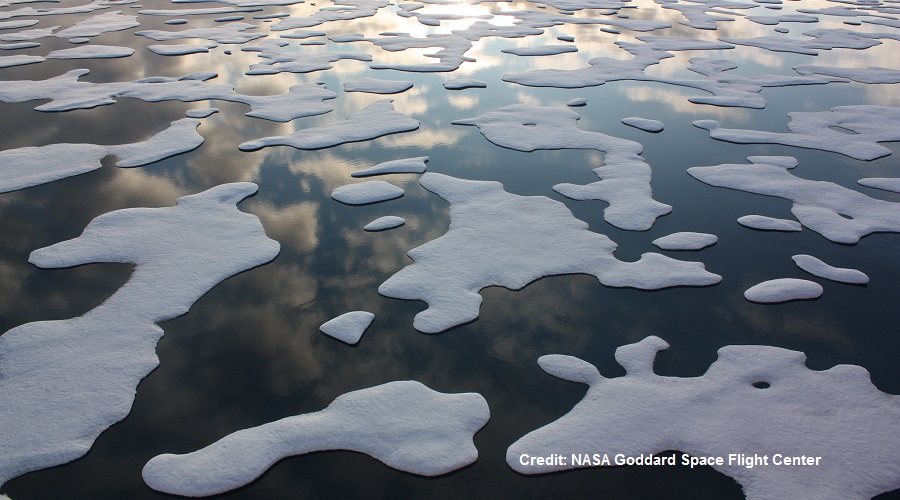
South in the Arctic Ocean. Image by NASA/Kathryn Hansen, Flickr.
Nature has its own way -sometimes subtle, sometimes brazen- to let us know that we are doing things wrong.
Take, for example, a person that consumes too much sugar. Weight gain beyond what is appropriate for this individual is the first sign of alarm the body uses to tell this person that something is wrong with the eating habits. Then, an insulin rollercoaster starts creating blood sugar highs and lows. Then, diabetes hits…
Same way the human body is able to send early signs of what’s to come if a person mistreats it, nature has mechanisms for letting us know that things are not okay and that if we keep doing what we are doing wrong, then catastrophe ensues.
For a few years now, every summer we read a variation of the following headline: “X was the hottest month ever recorded,” while a recent feature article published in the Washington Post demonstrated, with more than a century of National Oceanic and Atmospheric Administration temperature data, that major areas in 48 US states have become warmer by or almost by 2˚C.
In the view of the Sea Around Us Principal Investigator, Daniel Pauly, such hot spots are warnings from nature. “Basically, these hot spots are chunks of the future in the present,” he told the Post in a quote that was picked up by many other outlets.
For Pauly, the fact that Alaska is the fastest-warming state in the US and New Jersey’s average temperature has climbed by close to 2˚C since 1895, which is double the average for the Lower 48 states, are occurrences that allow humanity to see what will likely be the norm everywhere if measures to halt climate change-causing activities are not taken.
To explain it in a sci-fi kind-of-way, the hotspots –which, besides other US regions, include places like the mountains of Romania and the steppes of Mongolia, while Earth as a whole has warmed 1˚C in the past century- are sort of portals that allow us to see what the future is going to be like while we still have time to come back and change it.
In such places, activities –including economic activities– that once were the norm, are no longer viable while animals and plants that once were common sights, have become rare or no longer exist.
As WaPo reports, the United Nations Intergovernmental Panel on Climate Change has shown that if the entire planet heats up by an average of 2˚C, virtually all coral reefs will die; retreating ice sheets in Greenland and Antarctica could unleash massive sea-level rise; and summertime Arctic sea ice, a shield against further warming, would begin to disappear.
Is humanity going to start paying attention to the warnings nature is sending while there is still some time to prevent further damage?


